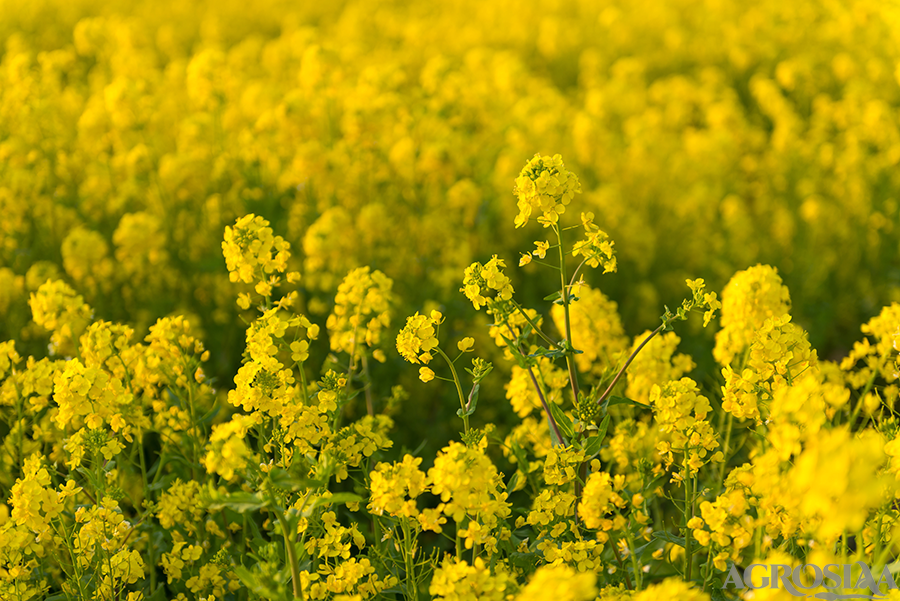Rai, Mohari
Cruciferae
Brassica juncea L.
Brown mustard (Rai) - Brassica juncea
Sarson Yellow or Brown- Brassica campestris
Toria- Brassica napus
Banarasi rai- Brassica nigra
Mustard- Varuna, Sita, Pusa bold, T. M.-4, T. M.-2, Prakash, T. M. -21, TPM-1,
GM-1 and 2, Laxmi, Narendra rai, Agrani (SET-2)
Yellow sarson- Pusa Kalyani, BSH-1, KOS-1, KBS-1, Pusa gold, NDYS-921, Rajendra sarson.
Brown sarson- K-88, Boney-9, Pusabahar, YS-24, Type -42, YST-151
Toria- Sangam, T-9, T-29, T-36, br.23, Agrani (B-54), T-29, ITSA, Jawahar toria, Panchali
Taramira- T-27, TMC-1, TMLC-2, RTM-314
Season for sowing of mustard crop is rabi.
Mustard is a rabi crop that requires relatively cool temperature for satisfactory growth and dry period at harvest. Sarson and taramira are preferred in low rainfall areas wehereas rai and toria are grown in medium and high rainfall areas.
The rape seed and Mustard thrives well in light to heavy loams. Rai may be grown on any type of soil but toria best in loam to heavy loams. Sarson is suited to light loam soils and taramira is mostly grown on heavy light soils.
As the seeds of these crops are small a fine seedbed is required to ensure good germination. One to two ploughing , each followed by planking and three to four harrowings. Toria is particular requires a fairly moist seedbed for good germination but excessive moisture should be avoided.
seed are treated with bavistin @ 2 gm/kg of seed or dithane M-45 @ 3 gm/kg of seed or brassicol or Capton @ 4 gm/kg of seed to protect from root rot and sclerotia disease.
The seeds are either sown by broadcasting in the main crop or mixed with the main crop seed and drilled as per the spacing of main crop. Sowing is also done with a pora (tube) attached to a plough.
Optimum time of sowing is first fortnight of October. Toria is sown in the mid to last week of September.
For Mustard
Distance between two rows is 45 cm
Distance between two plants is 15 cm
For Rapeseed
Distance between two rows is 30 cm
Distance between two plants is 10 cm
Optimum seed rate for pure crop is 5 kg/ha
Mixed crop = 2-2.5 kg/ha
Thinning is carried out twice at 15 and 25 days after sowing by keeping only one healthy plant per hill at a distance of 15 cm for mustard and 10 cm for rape seed. One to two hieing and one to two weedings are given as per the weed intensity.
For rainfed crop fertilizers drilled at sowing @ 40 kg N + 20 kg P2O5 /ha. Under irrigated conditions crop is fertilized with 50 kg N + 25 kg P2O5 /ha. Half of the quantity of n along with full P is applied at the time of sowing. Remaining half the quantity of N should be top dressed 30-35 days after sowing.
The total water requirement of the mustard crop is 25-30 ha.cm the number of irrigation depend upon the rainfall. In drought situations two protective irrigation one at flowering and the other at pod formation.
one to two weedings are necessary. Preemergence Pendimethalin (stomp) @ 1.0 to 1.5 kg a.i./ha in 500 liters of water to control many annual grasses some BLWs.
usefulness of cultural and agronomic practices such as timely sowing, sanitation, ploughing, crop rotation, intercropping, spacing and nutrient management in minimizing the losses due to diseases and pests. Seedling blight and damping off controlled by seed treatment with effective fungicides. Mixture of thiram + cabendarim (2:1) or thiram + caboxin (2:1) 0.2% is recommended. In case of Downy mildew control be treating the seeds with Apron 35 SD (metalaxyl) @ 6 gm/kg seed
Aphids controlled by spraying the crop at flowering to early pod formation stage with a mixture of Ridomil MZ 72 WP and mancozeb.
Harvesting is done as sown as the crop begins to turn yellow. Mustard is ready to harvest in 110-120 days. Whereas toria by 75-100 days after sowing. Mustard is harvested in February to march and toria in the month of December. Care should be taken to ensure the harvesting of mustard before the pods open in order to avoid losses from shattering of seeds . harvesting is done in morning hours.
-The crop is cut close to the ground with the help of sickle and it is brought to threshing yard and alloed to dry. The threshing is done with the help of sticks or mogri. Winnowing is done with the natural air current but the wind velocity should not be blown with the high air.
Mustard
a) Rainfed = 8-10 qtls/ha
b) Irrigated= 12-15 qtls/ha
grading , cleaning stored in bags , bin
spices, oil industry, cattle feed (oil cake)
1) Rapeseed and mustard yield the most important edible oil which is used for culinary purposes.
2) The oil content of the seeds 30-48%. The oil possesses a sizable amount of erucic acid (38-57%), Linolenic acid 4.7- 13 %
3) The seed and oil are used a condiment in the preparation of pickles and for flavouring curries and vegetables.
4) The oil cake is mostly used a cattle feed and small quantities are also used as manures.
5) Protein content in rapeseed and mustard seed normally ranges between 24 - 30%.
6) The leaves of young plants are used as green vegetable.
7) Oil is used in tanning industries for softening leather.
8) Oil is used preperation of hair oil, soap making and medicines (B. campestris oil used to cure stomach and skin disease as they supply enough sulphur and minerals in the diet.)
Processing and Packaging- grading , cleaning and packed in polythene bags or gunny bags.
These crops are extensively grown in northern India, Uttarpradesh, Punjab, Bihar, Haryana, Assam, Madhyapradesh, Rajasthan, West bengal and Orissa.
Uttarpradesh, Punjab, Bihar, Haryana, Assam, Madhyapradesh, Rajasthan, West bengal and Orissa.










